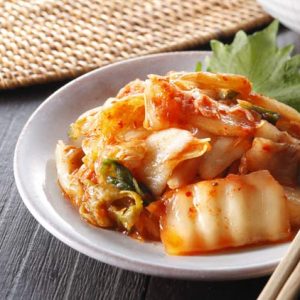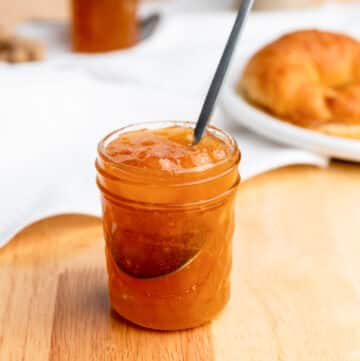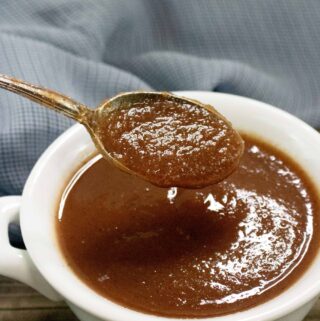Nowadays, Kimchi is making its way not only in Korean cuisine but into a variety of other dishes. We can literally eat this Korean condiment/side dish with anything from our favorite fried rice to dumplings to siomai to spring rolls, bacon burgers, hot dogs, pizza, and many more. There are A LOT of varieties of Kimchi (about 200 different kinds) and they all have their unique zangy twist in regards to the flavor.
As what I've said, there are over a hundred kinds of Kimchi, but we'll be focusing on making a Cabbage Kimchi from scratch by following this Kimchi recipe.
Cabbage Kimchi
The slightest puff of spicy, aromatic, fermented cabbage make our mouths water. Cabbage Kimchi is just one of many traditional Kimchi recipes consisting of fermented chili peppers usually based on cabbage.
Korean's Traditional Soul Food
The taste of Kimchi is dependent on the types, quality and ratio of the seasoning ingredients. It varies pretty widely because every household has its own methods! We can always rely on our own sense of smell and taste in order for us to end up with a fine batch. It can be mild or fiery. The choice is yours to make.
Note that some of the seasoning ingredients can't be bought at our local supermarkets. You should check out the nearest Asian store or even online. (We've included links to some of these products on Amazon for your convenience.) For the distinct pungency and depth of flavors and to aid the fermentation process, various jeotgal (salted seafood) are used. But the saeujeot (salted shrimp) and myulchiaekjeot (fish sauce made with anchovies), on the other hand, are the two ingredients that are most commonly used.
But there are alternatives.
No matter where you live, as long as you can order the supplies to make kimchi, you can learn how to cook this highly-seasoned condiment. And, we've got your back. Follow the simple steps in this recipe and learn how to make some super tasty cabbage kimchi.
We will show you how easy it is to make delicious cabbage kimchi with its pungent yet refreshing flavor. This is doable for a novice. And here's the recipe:
Kimchi is fairly easy to make with these ingredients:
- 1 medium head (2 pounds) napa cabbage
- ¼ cup sea salt or kosher salt or other iodine free salt
- Spring, Distilled or Purified Water
- 1 tablespoon grated garlic
- 1 teaspoon grated ginger
- 2 to 3 tablespoons seafood flavor or water
- 1 teaspoon sugar
- 1 to 5 tablespoons Korean red pepper flakes (gochugaru)
- 8 ounces Korean radish or daikon, peeled and cut into matchsticks
- 4 scallions, trimmed and cut into 1-inch pieces

Following these simple directions, you'll be eating kimchi in no time.
Slice the cabbage into 2-inch-wide strips. Salt the cabbage and put into a large bowl with salt. Massage the salt into the cabbage until soft then add enough water to cover the cabbage. Put a plate on top and weigh it down with something heavy (a can of beans works) so that cabbage stays submerged. Let stand for 1 to 2 hours.
Rinse and drain the cabbage: Rinse the cabbage under cold water 3 times and drain in a colander for 15 to 20 minutes.
Combine the garlic, ginger, sugar, and seafood flavor (or 3 tablespoons water) in a small bowl and mix to form a smooth paste. Mix in the gochugaru to taste – more equals spicier.
Squeeze any remaining water from the cabbage. Add it to a large bowl along with the radish, scallions, and seasoning paste. Mix everything together until completely coated.
Add the mixture into the jars packing it tightly until the brine rises to cover the vegetables Leave at least 1 inch of head space. Seal the jar with the lid.
Let the jar stand at room temperature for 1 to 5 days to ferment. You may see bubbles inside the jar and brine may seep out of the lid; place a bowl or plate under the jar to help catch any overflow.
Check the kimchi once a day. Make sure the vegetables stay submerged under the brine. Check it daily for flavor and refrigerate when ready. You may eat it right away, but it's best after another week or two. Makes 1 quart.
Recipe

Cabbage Kimchi
Ingredients
- 1 medium head 2 pounds napa cabbage
- ¼ cup sea salt or kosher salt or other iodine free salt
- Spring Distilled or Purified Water
- 1 tablespoon grated garlic
- 1 teaspoon grated ginger
- 1 teaspoon sugar
- 2 to 3 tablespoons seafood flavor or water
- 1 to 5 tablespoons Korean red pepper flakes gochugaru
- 8 ounces Korean radish or daikon peeled and cut into matchsticks
- 4 scallions trimmed and cut into 1-inch pieces
Instructions
- Slice the cabbage into 2-inch-wide strips. Salt the cabbage and put into a large bowl with salt. Massage the salt into the cabbage until soft then add enough water to cover the cabbage. Put a plate on top and weigh it down with something heavy (a can of beans works) so that cabbage stays submerged. Let stand for 1 to 2 hours.
- Rinse and drain the cabbage: Rinse the cabbage under cold water 3 times and drain in a colander for 15 to 20 minutes.
- Combine the garlic, ginger, sugar, and seafood flavor (or 3 tablespoons water) in a small bowl and mix to form a smooth paste. Mix in the gochugaru to taste – more equals spicier.
- Squeeze any remaining water from the cabbage. Add it to a large bowl along with the radish, scallions, and seasoning paste. Mix everything together until completely coated.
- Add the mixture into the jars packing it tightly until the brine rises to cover the vegetables Leave at least 1 inch of head space. Seal the jar with the lid.
- Let the jar stand at room temperature for 1 to 5 days to ferment. You may see bubbles inside the jar and brine may seep out of the lid; place a bowl or plate under the jar to help catch any overflow.
- Check the kimchi once a day. Make sure the vegetables stay submerged under the brine. Check it daily for flavor and refrigerate when ready. You may eat it right away, but it's best after another week or two. Makes 1 quart.






Comments
No Comments